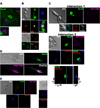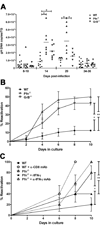Noncytotoxic lytic granule-mediated CD8+ T cell inhibition of HSV-1 reactivation from neuronal latency
- PMID: 18845757
- PMCID: PMC2680315
- DOI: 10.1126/science.1164164
Noncytotoxic lytic granule-mediated CD8+ T cell inhibition of HSV-1 reactivation from neuronal latency
Abstract
Reactivation of herpes simplex virus type 1 (HSV-1) from neuronal latency is a common and potentially devastating cause of disease worldwide. CD8+ T cells can completely inhibit HSV reactivation in mice, with interferon-gamma affording a portion of this protection. We found that CD8+ T cell lytic granules are also required for the maintenance of neuronal latency both in vivo and in ex vivo ganglia cultures and that their directed release to the junction with neurons in latently infected ganglia did not induce neuronal apoptosis. Here, we describe a nonlethal mechanism of viral inactivation in which the lytic granule component, granzyme B, degrades the HSV-1 immediate early protein, ICP4, which is essential for further viral gene expression.
Figures



References
-
- Hufner K, et al. J Neuropathol Exp Neurol. 2006;65:1022. - PubMed
Publication types
MeSH terms
Substances
Grants and funding
LinkOut - more resources
Full Text Sources
Other Literature Sources
Research Materials

